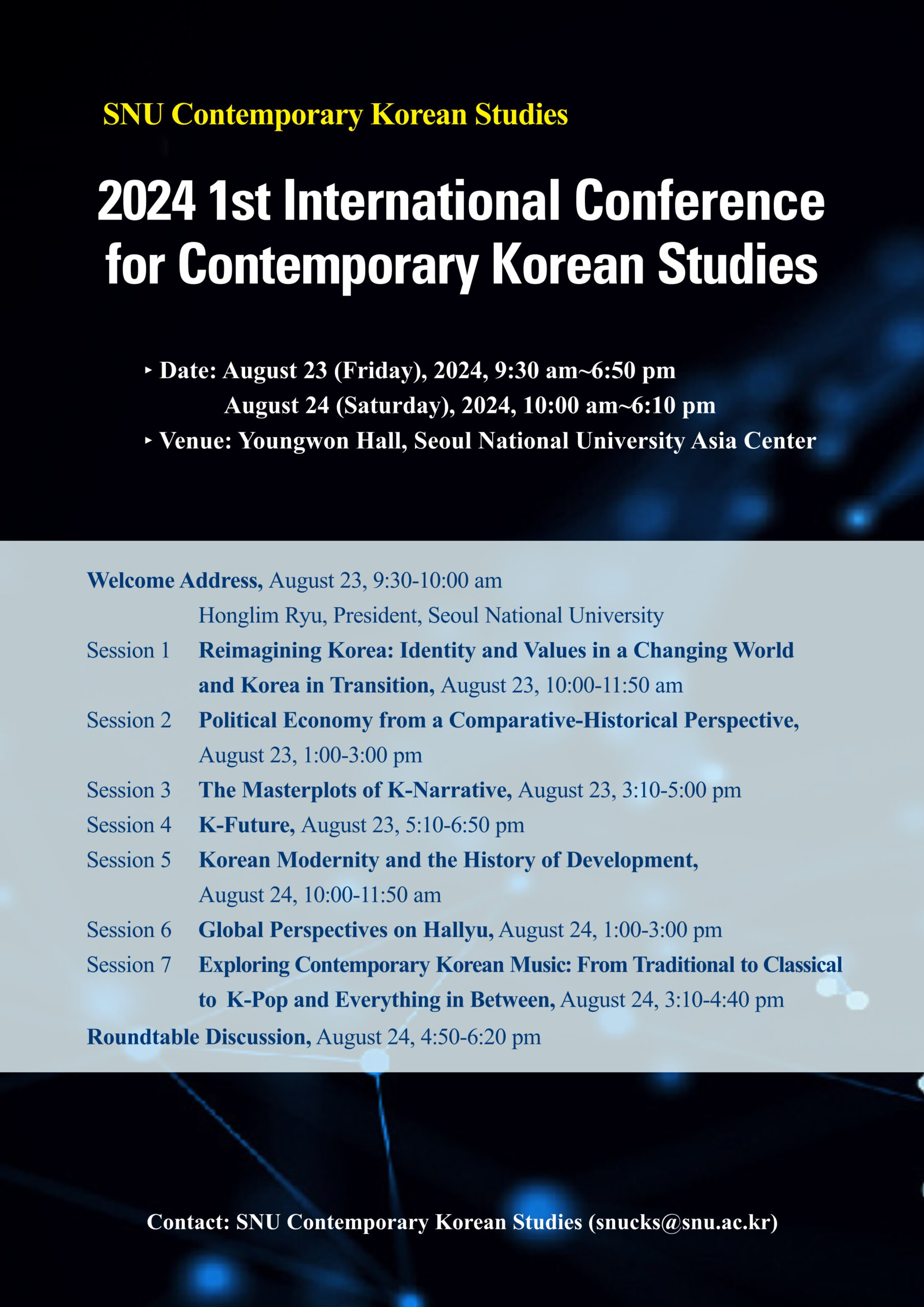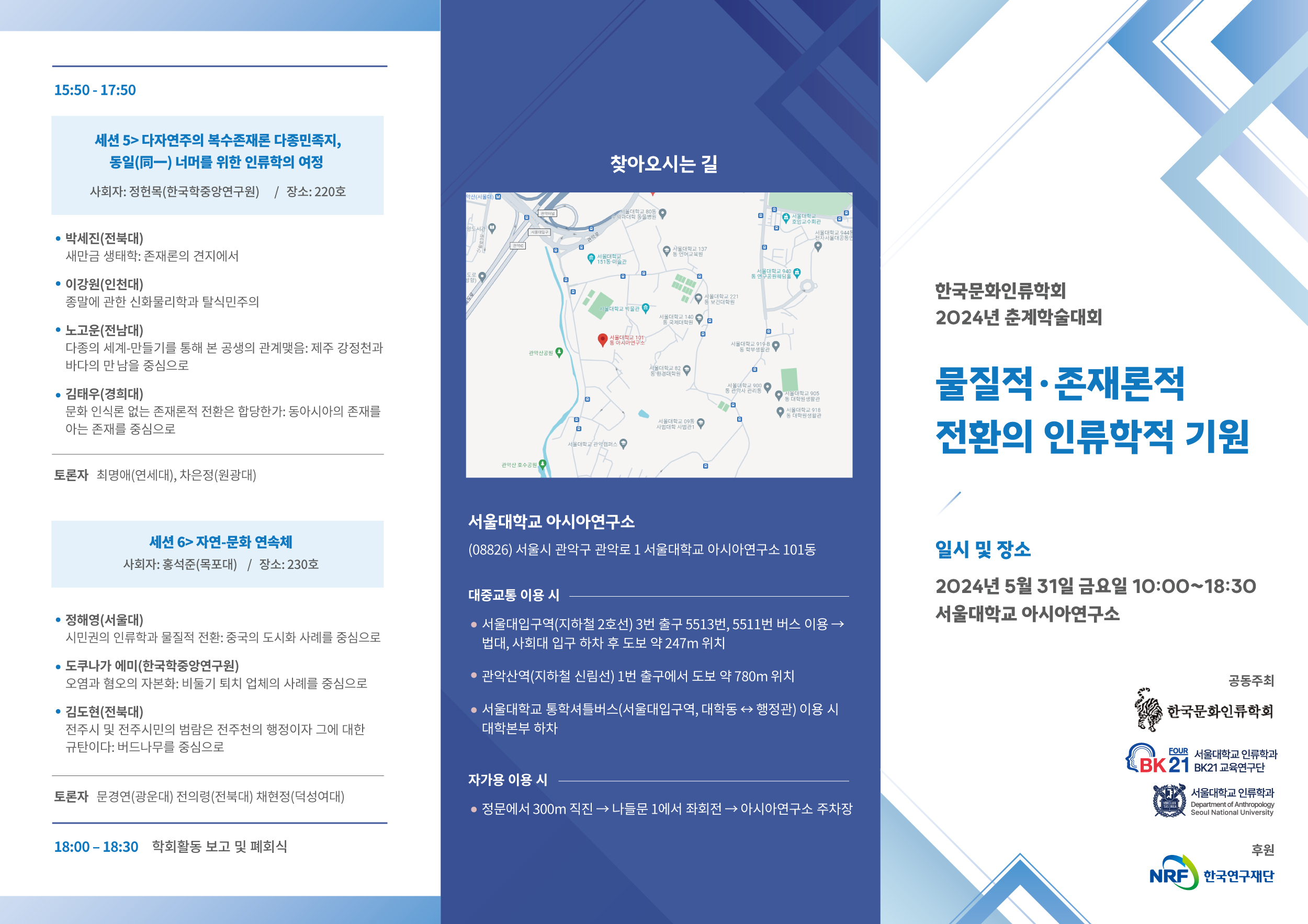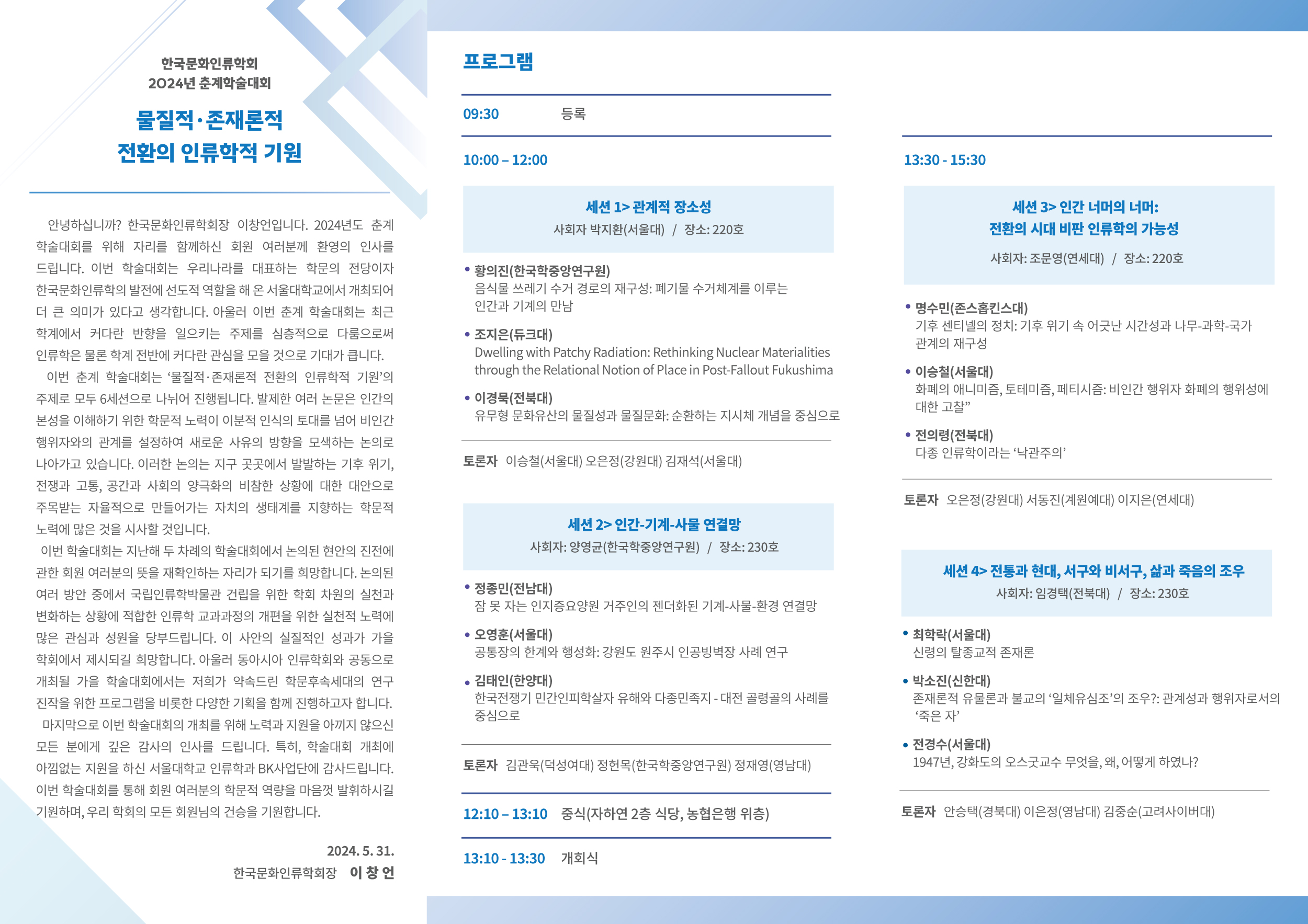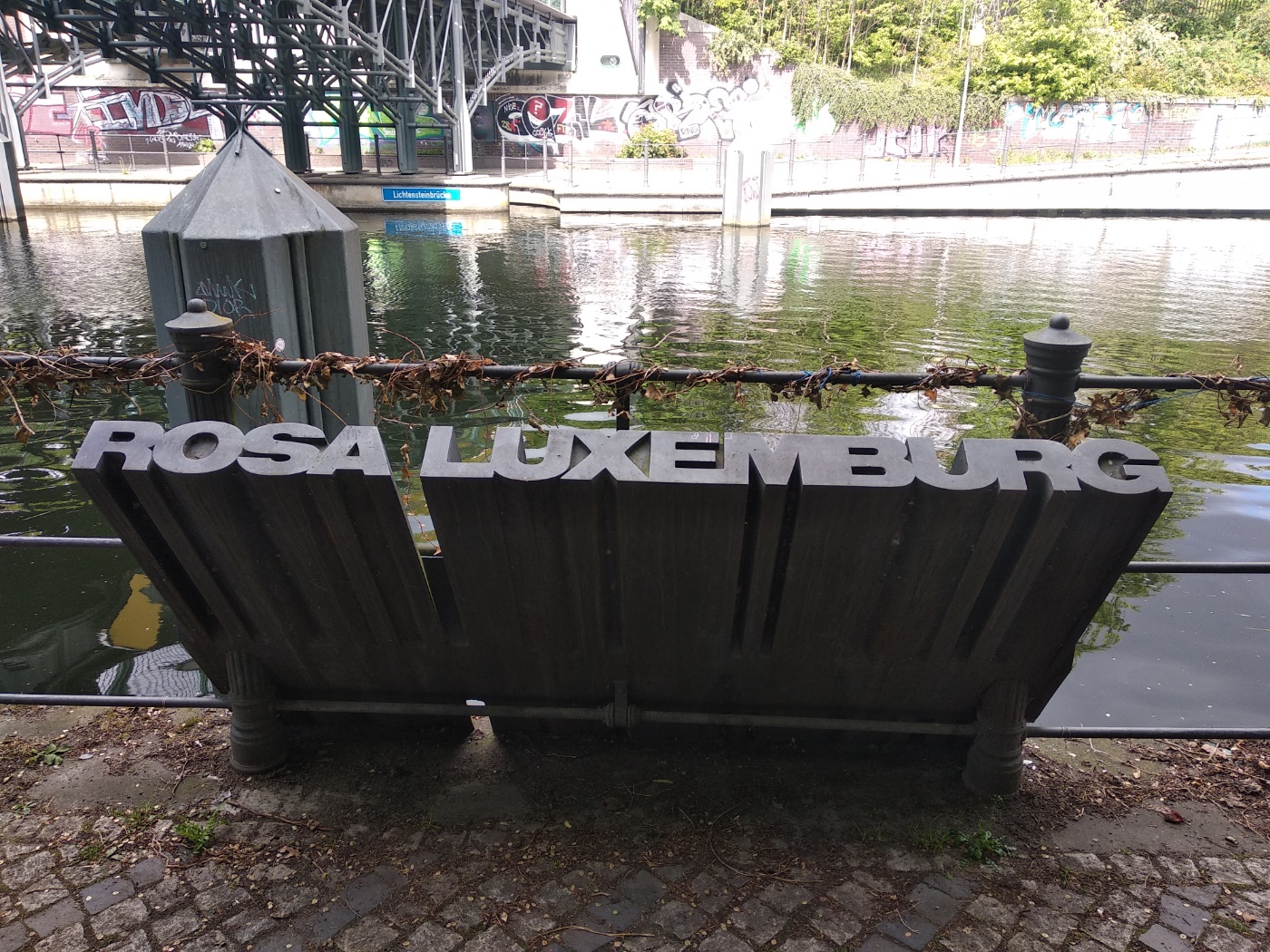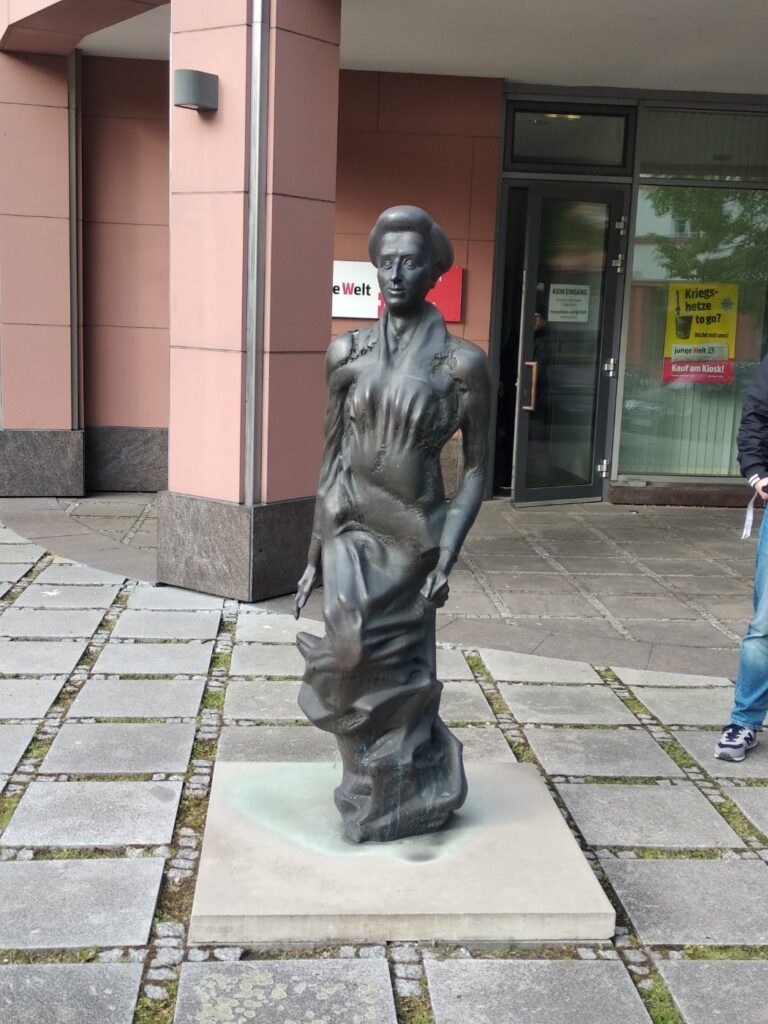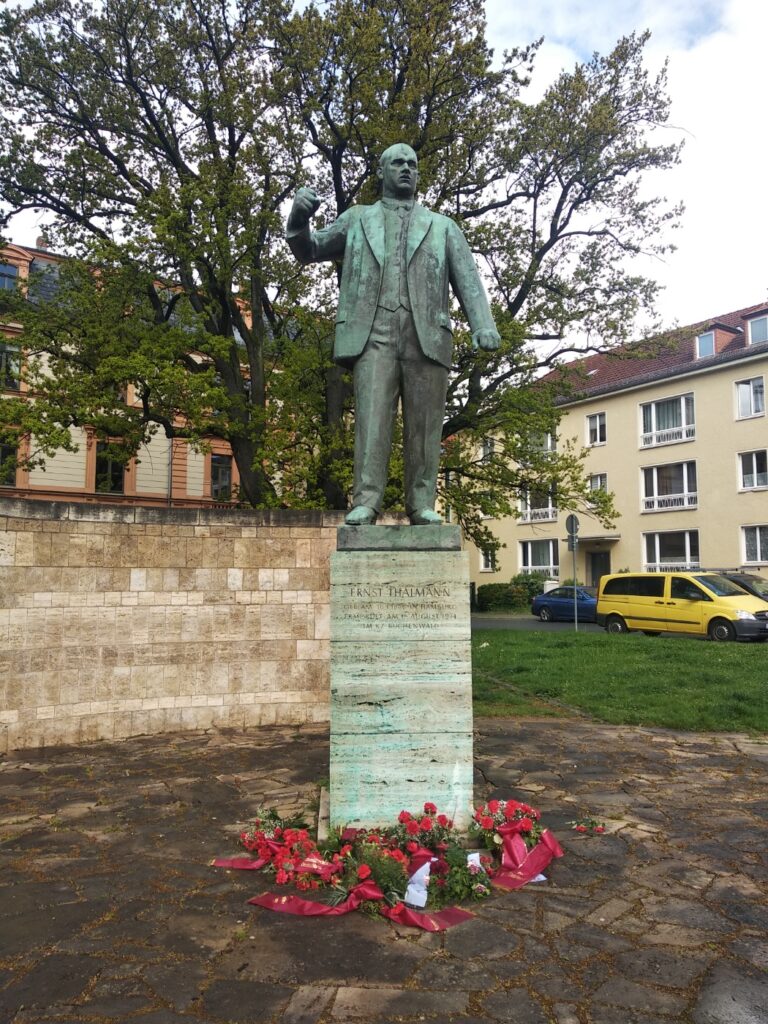서울대학교 민속학센터 창립학술대회에서 발표된 오창현 선생님의 글, “21세기 한국 민속지의 이론적 과제: 공동체의 중심과 주변을 향한 시선”에 대한 토론문. 민속학 연구자가 아님에도, 발표문 자체가 워낙 흥미로운 문제제기와 내용을 담고 있어, 즐거운 마음으로 토론할 수 있었다.
===========
오창현, 「21세기 한국 민속지의 이론적 과제: 공동체의 중심과 주변을 향한 시선」 토론문
오창현 선생님의 글은 세계시장화·대중사회화·인류세 기후위기와 같은 조건이 전면화된 21세기 민속학의 새로운 방향으로 다음과 같은 세 가지 과제를 제시하고 있습니다. 첫째, 고전적인 문화전파론의 문제의식을 발전적으로 계승하여 특정한 생활양식이 주변부로 확산되는 과정을 시장과 일상구조의 역동 속에서 추적하는 것. 둘째, 대중사회에서의 민속을 연구하기 위한 새로운 현장연구 방법론으로 ‘행위자-네트워크-이론(ANT)’의 문제의식을 빌려 이질적인 인간-비인간 행위자 간 네트워크와 이들 간의 구체적 ‘번역’ 과정에 주목하는 것. 셋째, 인간주체 중심의 서구 근대성에 대한 비판과 성찰을 위해 주변부의 문화, 특히 비인간 존재와 교류하고 공존해온 주변부의 ‘자연문화’에 대한 연구를 수행하는 것.
저는 현대금융을 연구하는 인류학자로서 민속학에는 과문하지만, 오창현 선생님의 지적은 변화하는 현대사회에서 민속학의 새로운 방향설정과 관련해 시의적절한 문제제기와 제언이라 생각됩니다. 특히 최근 ‘신유물론’이나 ‘존재론적·물질적 전회’라는 이름으로 인문사회과학 전반에서 증가하고 있는 물질문화나 비인간 행위자에 대한 관심이, 사실은 민속학 내에서 오랫동안 이어져온 고전적 문제의식이라는 점에서, 이러한 제안은 더욱 특별하게 다가옵니다. 민속학에서 이러한 문제의식을 되살려 사물과 비인간에 대한 연구를 선도해 나간다면, 다른 분과학문과의 상호교류와 대화도 더욱 활성화되지 않을까 싶습니다. 더 나아가 오창현 선생님은 행위자-네트워크에서 이질적 행위자들을 연결하는 번역자로서 ‘상인’에 대한 연구를, 비인간 행위자와의 관계를 포함한 전근대 자연문화의 예로 ‘백정의 민속’을 제시하는 등 이러한 이론적 과제를 실현할 구체적인 연구 주제도 함께 제안하고 있기에, 향후 선생님과 민속학계의 새로운 연구에 대한 큰 기대를 갖게 합니다.
이 토론문은 선생님의 새로운 방향제안에 동의하고 또 응원하면서, 이를 위해 추가적으로 고려하면 좋을 것 같은 두어 가지 사안들에 대해 간략히 논해보고자 합니다. 이하 경어는 생략하겠습니다.
1. 매개/장치의 문제에 대해
오창현의 글은 전세계화된 대중사회의 생활양식과 일상적 소비를 분석하기 위해서 어떠한 새로운 현장연구 방법론이 필요한지 질문하고, 그 답으로 ‘행위자-네트워크-이론’을 제시하고 있다. 저자에 따르면, 이러한 행위자-네트워크-이론의 유용성은 “다양한 비인간 행위자 네트워크”와 이 네트워크를 형성하는 “이질적인 것들의 번역 과정”에 의존하는 “현대사회의 본질적인 특성을 반영하는 것”이기도 하다(6쪽). 이러한 방법론을 한일간 해조류 교역이라는 구체적인 연구에 적용하면서, 저자는 이질적인 소비자들과 생산자들을 연결시키는 ‘번역자’로서 상인의 역할에 주목할 것을 제안하고 있다.
그런데 인간행위자 ‘상인’에 초점을 맞춘 이같은 접근은 초국적 상업 네트워크를 경험적으로 분석하기 위한 흥미로운 통로이지만, 행위자-네트워크-이론을 활용한 것이라 보기엔 다소 제한적이고 전통적인 접근으로 보인다. 흥미롭게도 최근 문화인류학 쪽에서도 대중 및 군중현상 대상으로 한 인류학적 현장연구의 새로운 방법론에 대한 고민들이 제출되고 있는데(e.g., Lepinay and Latour 2009, Samet 2019, Cody 2023), 이들의 논의를 참고해보는 것도 좋을 듯 하다. 행위자-네트워크-이론의 직·간접적 영향 속에서 이들은 공통적으로 이질적인 대중과 각종 행위자들의 네트워크에 접근하는 통로로서, ‘매개/매체(media)’와 ‘장치(device/dispositif)’의 문제에 주목하고 있다. 라투르(2016: 6장)가 보여주듯이, 네트워크의 확장은 이질적 행위자들을 매개·번역하고 연결시켜주는 각종 장치들―예컨대, 지도, 나침반, 표본, 다이어그램, 로그, 항해술, 서류양식, 우편체계, 기입도구 등등―의 증식을 동반한다. 네트워크가 확장되고 조밀해 질수록 이들 장치 역시 함께 증식하며, 역으로 이러한 장치를 통해서만 행위자들은 단단한 동맹을 형성하게 된다.
저자가 제안하고 있는 ‘상인’에 대한 연구와 이들의 ‘매개’나 ‘장치’에 대한 고민은 서로 상충하기보다는 상호 보완적인 것으로 보인다. 예컨대, 저자가 들고 있는 예처럼 상인들이 일본 홋카이도와 조선의 경성, 함경도의 청진 등을 넘나들며 “세 지역을 번역하며 부를 축적”했을 때(8쪽), 어떠한 장치와 인프라스트럭처를 통해 정보가 번역·소통되었고, 어떠한 계산장치에 기반해 상인들이 결정을 내리고, 어떠한 기술들이 이러한 결정의 실행을 가능하게 했는지에 대해 질문해볼 수 있을 것이다. 혹은 20세기 초 조선의 명란이 일본으로 수출되고, 일본의 명태살이 조선에 수입될 때, 이러한 교역의 네트워크를 만들고 명란과 명태살을 상품화하는 것을 가능케 했던 기술과 시장장치, 인프라스트럭처의 변화는 무엇이었는지 구체적으로 추적해볼 수 있을 것이다.
이러한 매개 혹은 장치에 대한 관심은 저자가 제시하는 다른 논의에도 확대될 수 있다. 예컨대, 저자가 제안하는 문화전파 문제의식의 발전적 계승과 시장-물질생활의 역동에 따른 중심부 생활양식의 확산은, 이 전파를 가능케하는 장치와 매개에 대한 질문으로 이어져야 할 것이다. 저자의 주장처럼 한국의 근대화 과정에서 유교적 질서와 시장질서가 양립하고 상호변용되며 확산되어 나갔다면, 이 둘의 결합을 가능하게 했던 각종 장치들에 대해 물어볼 수 있을 것이다. (저자가 본문에서 언급하고 있는 계나 마을의 공동자산, 공동양식 등은 이러한 결합과 전파를 가능케한 장치 혹은 매개로서 분석될 수 있다.) 또한 저자가 제시하는 인간과 비인간 간의 상호소통을 전제로 한 자연문화에 대한 연구 역시, 이들 행위자 사이를 매개하는 (의례를 포함한) 번역 장치들에 대한 연구로 보충될 수 있을 것으로 보인다. 다시 말해, 저자의 문제의식처럼 민속학 현장연구에서 행위자-네트워크-이론의 문제의식을 적극적으로 받아안기 위해서, 매개 혹은 장치의 문제에 조금 더 깊이 천착해보는 것은 어떨지 제안하고 싶다.
2. 공동체의 스케일, 그리고 중심-주변의 문제에 대해
이 글의 부제는 “공동체의 중심과 주변을 향한 시선”이다. 저자의 설명대로 기존의 민속학이 “주류보다는 비주류”(9쪽), 중심보다는 주변의 문화에 관심을 기울여왔다는 점을 고려할 때, 이 부제 자체가 놀라운 것은 아니다. 다만 토론자는 이 부제와 관련해 두 가지만 질문하고 싶다. 첫째, 여기서 이야기되는 공동체의 구체적 스케일(scale)은 무엇인가? 즉, 저자가 “물질구조가 실은 사회적 의미를 전제로 하는 공동체에 기반해 전개되어 형성된다는 점”(3쪽)을 강조할 때, 이 사회적 의미를 공유하는 공동체는 어떤 단위(마을, 지역, 민족국가, 세계시장 등)를 염두에 둔 것인가? 둘째, 이와 관련하여 발표문에서 중심-주변의 축 역시 고정되지 않고 계속해서 변용되며 미끄러진다. 어떤 논의에서 중심은 상층신분과 “도시부의 문화”로 제시되고(2쪽), 다른 곳에서는 서구 근대성을 의미하며(9쪽), 어떤 논의에서는 “주변을 강하게 끌어들이며 주변부가 변화를 강요당하는” 소용돌이 한국사회의 특정한 구심점이 된다(10쪽).
토론자는 저자가 공동체의 스케일이나 중심-주변의 축을 명확히 정의하지 않는다고 비판하려는 것이 아니다. 오히려 이같은 공동체의 다층적 스케일과 계속해서 자리바꿈하는 중심-주변의 축이, (저자의 표현을 빌자면) 다양하고 이질적인 “행위자 네트워크에 의존하는 현대사회의 본질적인 특성을 반영하는 것”(6)은 아닌가라고 질문하고 싶다. 이는 저자가 기존 민속학의 관점에서 차용한 공동체, 중심-주변의 틀과 민속학의 이론적 혁신을 위한 자원으로 언급하는 행위자-네트워크-이론 간에 일정 정도의 긴장관계가 있을 수 있음을 의미하는 것이다. 예컨대, 오히려 물어야될 질문은 네트워크로 연결된 “세계자본주의”(1쪽)에서 공동체 및 중심-주변의 관계가 어떻게 재설정되는지 혹은 공동체와 중심-주변의 규정 자체가 다시 사고되어야 하는 것은 아닌지 등에 관한 것이 아닐까?
저자의 핵심 주장이 “공간을 일상적인 생활양식이 출현하는 중심부와 중심부로부터 영향을 받으며 주체적으로 수용하는 주변부로 나누고 생활양식의 변동을 시간에 따라 양자 간의 상호작용으로 분석하고자 했던 20세기 초 민속학적 방법론을 발전적으로 계승해야 한다”는 것이라면(1쪽), 이 때 ‘발전적’ 계승이 중심-주변의 설정과 관계(즉, 중심의 영향력과 주변의 주체적 수용)을 그대로 둔 채 비인간 행위자와 네트워크라는 문제의식만을 추가하는 것인지, 아니면 중심-주변의 규정과 이 둘 간의 관계 자체를 네트워크와 대칭성 인류학의 관점에서 다시 사고하는 데까지 나아가려는 것인지에 대한 질문을 제기하고 싶다.
참고문헌
Cody, Francis. 2023. The News Event: Popular Sovereignty in the Age of Deep Mediatization. University of Chicago Press.
Lepinay, Vincent and Latour, Bruno. 2009. The Science of Passionate Interests: An Introduction to Gabriel Tarde’s Economic Anthropology. Prickly Paradigm.
Samet, Robert. 2019. Deadline: Populism and the Press in Venezuela. University of Chicago Press.
라투르, 브루노. 2016. 황희숙 역. <젊은 과학의 전선: 테크노사이언스와 행위자-연결망의 구축>. 아카넷.


